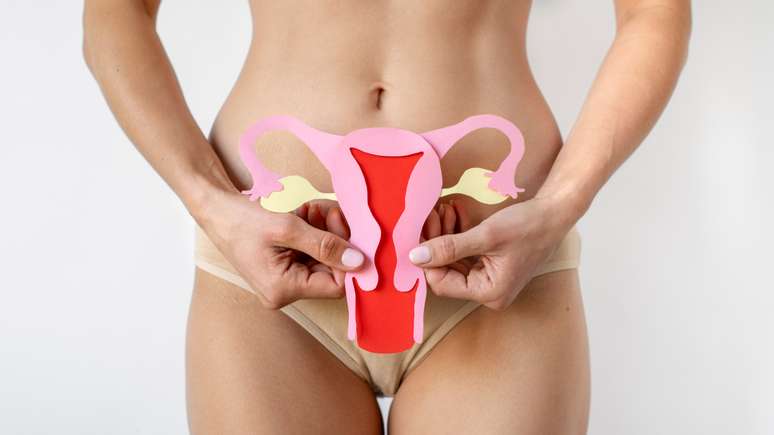In this week’s column, Jamar Tejada explains what candidiasis is, what the main symptoms are and mentions some natural treatments that can be used
She climbs the podium of complaints in gynecology studies, searches on Google and is confused with a sexually transmitted infection (STI). We are talking about a fungus, Candida albicans, which generates the famous candidiasis. It is estimated to appear in 75% of women at some point in their lives.
html[data-range=”xlarge”] figure image img.img-4a2f587077e04127196dd0070ca7305bu7vgipd4 { width: 774px; height: 435px; }HTML[data-range=”large”] figure image img.img-4a2f587077e04127196dd0070ca7305bu7vgipd4 { width: 548px; height: 308px; }HTML[data-range=”small”] figure image img.img-4a2f587077e04127196dd0070ca7305bu7vgipd4, html[data-range=”medium”] figure image img.img-4a2f587077e04127196dd0070ca7305bu7vgipd4 { width: 564px; height: 317px; }
What people don’t know is that this fungus is a natural inhabitant of our bodies, both on the skin and in the mouth and genital region of men and women. Yes, although much more common in women, men can also suffer from candidiasis.
What is candidiasis?
Candidiasis is another infectious condition that occurs when there is a gap in our immunity, as mentioned in my previous article, the lower the immune system, the higher the chance for this “fungus” and other opportunistic diseases to appear. That is, factors such as stress, poor diet, taking certain antibiotics, diabetes (which increases glucose in the urine, serving as food for mushrooms) and even pregnancy, are some of the points that lead to an imbalance in our flora.
The problem is not having Candida, but its excessive proliferation which occurs when there is an imbalance in the region where it lives. In addition to the factors mentioned, it can also be caused by poor hygiene of the genital organ or even by an excess of humidity. Remember that mushrooms love humidity? This is why infections increase in summer when we are in wet swimsuits, when we go out of the sea or the pool, for a long time. Tight-fitting clothes, jeans, and synthetic underwear also increase sweating, the “favorite” site of Candida fungus.
Symptoms: How do I know if I have candidiasis?
Candidiasis is an infection characterized by very characteristic symptoms, such as pain when urinating, pasty white discharge, itching in the vulva and even discomfort during sex. In men, the most common symptoms are: swelling of the penis, bruising in the form of stitches, small red spots and itching.
Remembering that a correct diagnosis can only be made by consulting a gynecologist or urologist and tests such as culture of vaginal discharge, as other infections can manifest themselves in a similar way. Therefore, self-medication and incorrect treatment can eventually aggravate the condition.
Candidiasis is unlikely to cause more serious problems, but it’s important to prevent it from taking hold, as when the fungus spreads through the body through the bloodstream, it can potentially cause blindness and kidney failure.
Candidiasis is considered recurrent when a woman has four or more episodes in the same year. Especially in these cases, medical support is essential, also to find out what is behind this recurrence.
Since Candida is a fungus that is normally found in our mouths, intestines and vaginas of women, it can easily develop in the baby, either because they have had diarrhea and put their contaminated hand into their mouth, or because their nipple, mother’s hands or something like a bottle nipple or pacifier is infected. However, some other factors also contribute, such as: staying in wet diapers for a long time, the presence of sweat and humidity in the folds of the body and the poor hygiene of pacifiers and bottles.
Candidiasis and sex
Candidiasis is not classified as an STI (sexually transmitted infection) but direct contact with a person who has candidiasis can lead to the development of the infection. Furthermore, sexual intercourse (even protected) can cause wounds and inflammation in the affected area. The relationship with penetration in the acute period of the disease should therefore be avoided, when itching and atypical secretion are present. It is also important to treat the partner, cross-treat this period of active infection, and even change the towel every day.
natural treatments
Since many women suffer from candidiasis, there is no shortage of homemade recipes, which I find a little worrying, as the vast majority have no scientific or logical basis, which can make the problem much worse, such as, for example, “use a swab with garlic” and also “using a swab with toothpaste”. Yes, as a pharmacist I listen to everything.
I write again: look for a gynecologist, do not trust everything you read on “Dr. Google”!
Another very common recipe is the use of yogurt with honey. Although there are relevant scientific studies in this case, this application must be done with the right and specific ingredients and for a certain time. What happens, sadly, is vaginal application with any milky drink, sometimes even with fruit added to any honey.
Naturally, this irrelevant revenue will result in much bigger problems. Don’t forget that mushrooms feed on glucose. This way, you will feed the “pets” even more! So, don’t come up with fancy recipes. Common sense and self-love are excellent advice.
While they are by no means a substitute for medical care, some home treatments can be used as directed by a doctor or pharmacist to supplement the indicated treatment, helping to relieve the symptoms of candidiasis.
Sitz bath with barbatimão
Barbatimão is a plant rich in flavonoids, terpenes and tannins with antibacterial, antifungal and astringent action.
Ingredients:
- 20 g of dried barbatimão peels
- 1 liter of water
Method of preparation: boil the water with the barbatimão peels for 10-15 minutes. Cover and let sit until cool. Strain and mix with more water to fill a bowl. After performing intimate hygiene, sit in the bowl and take a sitz bath for 20 minutes once a day.
Precautions for use: sitz bath with barbatimão should not be done by pregnant or breastfeeding women, as there is no research on the risk of using the plant in these situations.
Sitz bath with coconut oil and tea tree
Coconut oil is rich in lauric and caprylic acids with powerful antifungal and antimicrobial action. Tea tree essential oil, also known as tea tree, also has powerful antibacterial and antifungal actions.
Ingredients:
- 1 tablespoon of coconut oil
- 2 drops of tea tree essential oil
Method of preparation: wash your hands well. In a bowl, mix the coconut oil and tea tree essential oil with a spoon and apply to the genitals once a day for up to 5 days.
Chamomile sitz bath
With antimicrobial, anti-inflammatory, antifungal action thanks to its composition rich in flavonoids, such as apigenin, and essential oils, such as chamazulene, α-bisabolol.
Ingredients:
- 3 tablespoons of dried chamomile flowers
- 1 liter of water
Method of preparation: bring the water to a boil, turn off the heat and add the chamomile flowers. Cover and let rest for 10 minutes. Strain and mix with more water to fill a bowl. After performing intimate hygiene, sit in the bowl and take a sitz bath for 20 minutes once a day. Another option is to rinse the intimate area with the preparation once a day.
oregano essential oil
Oregano essential oil has a powerful antimicrobial, fungicidal and analgesic action due to some compounds such as: oleanolic and ursolic acid, flavonoids, hydroquinones, rosmarinic acid and tannins.
Ingredients:
- 2 drops of oregano essential oil
- 1 tablespoon vegetable oil (coconut, olive or almond)
Method of preparation: in a bowl mix the oregano essential oil well with the seed oil. With the skin already sanitized, apply the mixture, massaging the part.
Sitz bath with oregano oil:
Ingredients:
- 1 tablespoon of coconut oil
- 2 drops of oregano essential oil
Method of preparation: wash your hands well. In a bowl, mix the coconut oil and oregano essential oil with a spoon and apply to the genitals once a day for up to 5 days.
Precautions for use: Oregano essential oil is not suitable for people who are allergic to thyme, basil, mint or sage, as they may be sensitive to oregano oil, as the plant family is the same. Also, this oil should not be used by children, pregnant or nursing women.
Source: Terra
Ben Stock is a lifestyle journalist and author at Gossipify. He writes about topics such as health, wellness, travel, food and home decor. He provides practical advice and inspiration to improve well-being, keeps readers up to date with latest lifestyle news and trends, known for his engaging writing style, in-depth analysis and unique perspectives.








